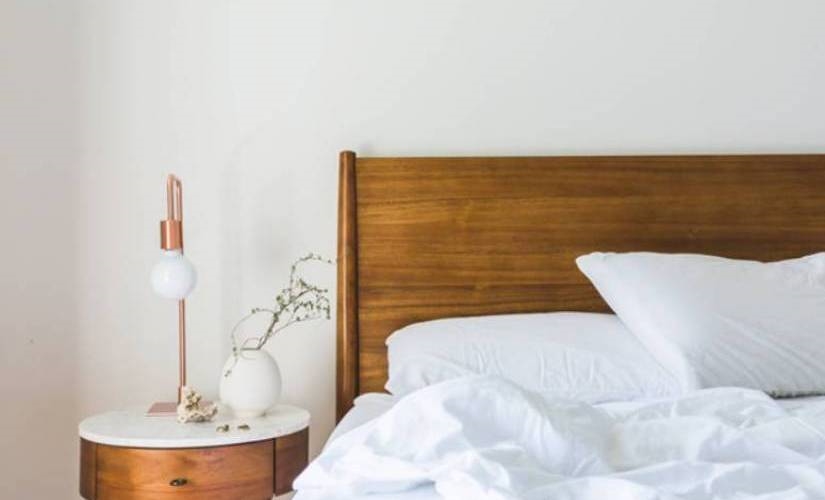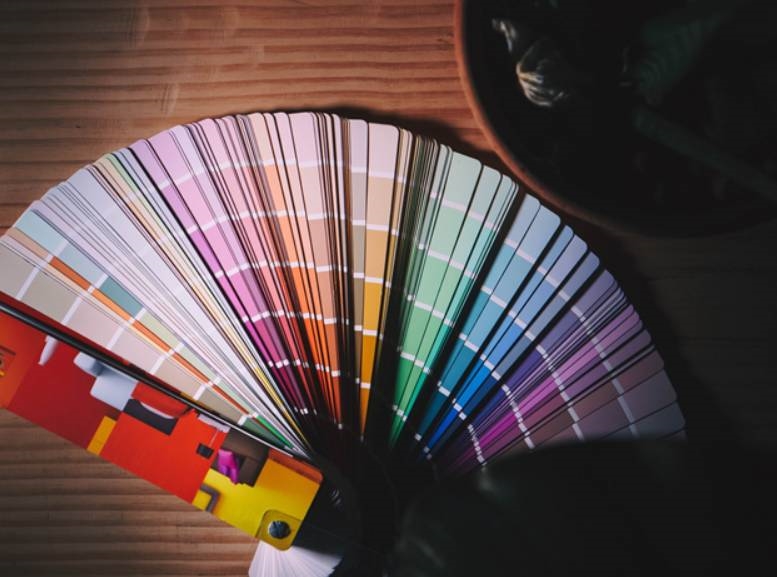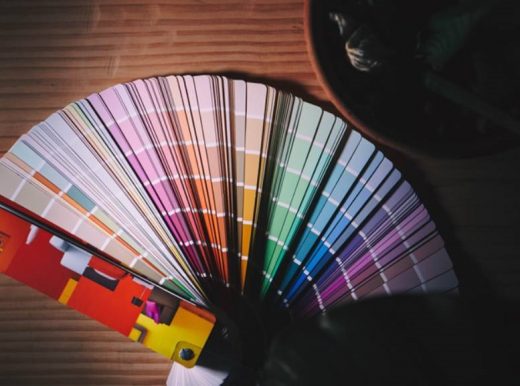Is Your Home Causing You to be Moody? Paint Your Home with these Colors Instead
Is Your Home Causing You to be Moody? Paint Your Home with these Colors Instead

Did you know that the colors of the walls in your home can affect your mood? Color can also affect your business both in the office and on your website. Make your office the best for a work environment and make your website the color of success. You may be comfortable in one room but uneasy and anxious in another. The color of the interior affects the atmosphere of your home.
Home redecorating projects can be a challenging task, especially for beginners. Painting homes, in particular, requires skill and a proper understanding of color psychology. When it comes to repainting, you have to choose your colors wisely to achieve the mood you want for each room.
What is Color Psychology?
In a nutshell, color psychology refers to the study of hues and how it affects human behavior. It gives us an idea of how colors affect a person’s mental, emotional, and behavioral response.

Scientists believe that colors can influence a person’s perception of things. For instance, when buying a home, the interior color can affect a person’s decision to buy. If the color placements in a home seem out of context, chances are, the buyers will move on to the next prospect.
The effects of color on people also depends on their age, cultural background, and gender. A personal association can also play a role in color preferences. For example, a child whose favorite childhood toy was red will prefer red-colored hues as they grow up. Conversely, if they had a bad memory of the color red, they may negatively respond to that shade.
However, some studies show that color preferences tend to be uniform across gender and race. Take green as an example. The color is often associated with plants and nature. Because of that, a lot of people see green as a color that encourages calmness and peacefulness.
Why it’s Important to Understand Color Psychology when Painting Rooms.
Colors offer more than just visual experiences and aesthetics. It has the power to change the room’s size, shape, and overall atmosphere. Color is also a language that affects a person’s perception and mood. It has the power to attract attention and alter a person’s feelings.
You may not know it, but as you enter the room, the first thing that your mind notices are the colors. That’s the reason why people’s feelings change immediately as they enter a room.
If you’re looking to create an emotionally healthy home, changing the rooms’ colors can be your first step. But it’s also important to understand that your choice’s color can affect the mood you want to achieve.
Color is a powerful design tool. It can boost our mood and make us feel calm. It can also trigger aggressive or depressive responses. One misstep in choosing your walls’ color can create a lasting effect on the people living in the house.
The Psychology of Room Colors
Although color psychology theories remain anecdotal, it doesn’t make it less important in interior design. The concept of color psychology has been around for thousands of years. In fact, even ancient Egypt used colors as some form of therapy (chromotherapy).
Interior designers know that using the right colors will impact the appearance and mood of the room. Before proceeding with your home repainting project, it’s important to understand the psychology behind the colors. This will make it easier for you to decide what colors you should use in each room in your house.
Visual temperature is another concept under color psychology. This divides the colors into warm (red, yellow, and orange) and cool tones (green, blue, and purple). For instance, warm colors can have energizing effects and encourage interaction among people in the room. Cool colors, on the other hand, promote peacefulness and relaxation.
Colors also have the power to create a visual illusion in a room. Artists consider warm colors as ‘advancing’ colors because it draws people’s eyes forward. It can make a huge room feel more intimate and cozier. Conversely, cool colors create a receding illusion. It can make a small room look larger and spacious.
Colors and Their Meanings
Now that you have a background of how colors affect mood and create visual illusions, it’s time to tackle what each color means and the feelings they convey. Knowing more about your favorite hues will help you choose a color palette that will make you and your home feel and look comfortable and fabulous.
Warm Colors
Red, orange, and yellow are considered warm colors. Here’s what these colors mean:
Red
Red is a great color for rooms that people usually gather in. It encourages socialization and helps boost the energy of the people around them. It also encourages hunger and excitement. This makes it a perfect color to use in areas like the living room or dining area. Its energizing effect also makes the color appropriate in your workout area. These characteristics also make it a less ideal color to use in areas of relaxation like the bedroom.
Orange
Like the color red, orange also stimulates the appetite making it a good color to use in the dining area or kitchen. Its vibrance can also make people happy and cheerful. Orange is a great choice when it comes to boosting your creative side. It blends well with neutral colors, so it’s perfect for people who want to add a pop of color to the room.
But beware, orange can be polarizing. Some people may not love it as much as others. Be sure to create a perfect balance when using this type of color in a room.
Yellow
Yellow is the happiest hue in the color spectrum. It’s closely associated with sunshine, entertainment, and enjoyment. It also affects light and attention. This is why it’s a perfect paint color to use in areas such as the living room or entertainment room.
Studies show that the color yellow also stimulates the brain. It can help boost concentration, focus and improve memory retention. These characteristics make yellow a great color to use in the study room.
Cool Colors
Cool color tones include the colors green, blue, and light violet. Here’s how each color affects the mood of a person:
Green
The color green helps establish balance and peace in a room. Its close association with nature helps foster feelings of relief, calmness, and relaxation. Painting a room green can also boost creative thinking. This makes it a good color of choice for areas where you want to be productive (i.e., offices, study rooms, studios).
Green also symbolizes tranquility, healing, and peacefulness – the moods you want your bedroom to have.
Blue
Blue is a great color for places like the bathroom, office/study, bedroom, or even the living room. It is a very calming color that can make you feel centered, relaxed, and serene. It is also known to help lower blood pressure, clear the mind, and help steady one’s breathing.
Homeowners should be careful when using pastel blues when repainting their homes. While blue rooms are lovely to lounge and rest in, pastel blues can come across as very cold and chilly. Light and warm blues, however, are perfect when combined with warm-colored furnishings.
Violet / Purple
Shades of purple can either be very dramatic or soft. Lighter shades of violet, such as lavender and lilac, can give off calming energy, making them great for bedrooms. Darker shades of violet create a creative and energetic note. This makes it a perfect color to use in living rooms and offices.
It’s possible to use different shades of purple in one area. But it’s important to be strategic in how you’ll do it. The best thing you can do is to work with a skilled painting contractor.
Neutral Colors
In addition to warm and cool colors, there’s also a middle ground for people who want to play it safe. In interior design, neutral colors mean without color. If you can’t describe a color as green, blue, violet, red, green, yellow, or orange, it’s considered a neutral color. Here are the most common colors considered as neutral and their meanings:
White
White is the most popular type of neutral color. It’s associated with cleanliness, so it is popular for bathrooms and accent colors in any other room. A warm shade of white also works well in the kitchen to create a modern, clean, and cozy feeling. However, bright whites or whites feel too clean, making it an unlikely option for living rooms and dining areas.
Black
Black hues are considered the new neutral paint colors because you can easily combine them with color schemes. You can use it to create an accent wall or add a modern touch to a room. You can also use black to give depth to a room or highlight other colors. Though, using too much can convey a dark and melancholy mood, so use it in moderation. If done correctly, it can make a room look stunning.
Grey
This trendy color can be used as the main color anywhere. It is quite neutral and contrasts well with a lot of brighter colors. Grey works just as well as an accent, especially if it’s combined with bright reds and yellows. The neutral color grey can give a calm and peaceful feeling to a room.
Brown
Brown is best used as the main colors of the living area, dining room, or even the bedroom. Brown tends to be associated with warmth, making it an ideal color in any living space. It can make a room feel cozy, homey, and inviting. You can also use it as an accent in the office or other areas to add creativity.
Now that you are familiar with the effects of colors in each room, you can use this as your guide in choosing the colors in your home. Consider what mood you want to achieve in each room carefully and use the guide above to decide on a color. Don’t be afraid to experiment with different shades, tones, and accents.
Painting Tips to Keep in Mind
If you’re torn on what color you should choose for your home’s walls, there’s an easy way to tackle the task. It’s safe to say that not all of us will stick to neutral colors when painting our homes. Some will want to incorporate their favorite bright colors on their walls. And that’s okay. The important part is that it will create the mood you want the rooms in your home.
Here are some tips to keep in mind when repainting your home:
Find an Inspiration
We’re at the age of technology. That means there are many resources you can use to find the perfect inspiration for your project. Pinterest, for one, is a hub for arts and interior design. You can create boards where you can pin your “inspirations” on. Once you have about 10 or more, look closely and try to see a common pattern among your choices. If you’re working with a professional painter, you can show them pictures and ask for suggestions.
Choose the Right Sheen
Each of the walls in your house is exposed to different conditions. For instance, the kitchen walls may get greasy as you cook your meals throughout the day. Kids may also write on the walls of their playroom. Some walls in the house may also have some imperfections that you would like to cover. Choosing the right sheen will help you address those issues. Here’s a short guide on the different types of sheen.
- High-gloss – perfect for kitchen walls and rooms that get much traffic; it’s easy to clean and maintain.
- Semi-gloss – also good for the kitchen but recommended in bathrooms because of its washability. It’s cheaper than high-gloss options.
- Satin sheen – best used in kitchens, baths, and hallways. It’s a perfect choice for people who wants a bit of gloss with a smooth finish.
- Flat or matte paint – this is a great option for walls that have a lot of imperfections. The downside of matte paints is that it’s difficult to clean and hard to maintain.
Consider Painting Your Ceilings
It’s easy to forget about the ceilings when repainting a house. But did you know that a little paint on the ceiling can make it look higher or lower than it actually is? If you want your ceilings to look higher, you can paint it with a light color. On the contrary, you can use darker colors if you want your ceiling to appear lower.
Add a Pop of Color to Small Spaces
Most people often don’t go with bolder colors for small rooms because it shrinks the room even further. But what if you can add a wow-factor to a small room? You can add shapes and fill it with a darker color to add a pop of color to a small space on one side of the wall. This can make the room livelier and more inviting.
Are You Ready to Paint Your Home?
If you find it difficult to choose the right color for the rooms in your home, take comfort in the fact that you’re not alone. It can be frustrating to pick the best one, especially if you know little about the colors’ psychology. But now that you have an idea, it will be easier for you to pick the right one for your house.
Your home should be a place that fosters relaxation, joy, and happiness. By picking the right color scheme for your home, you’ll be a step closer to achieving a stress-free and cozy home.
The post Is Your Home Causing You to be Moody? Paint Your Home with these Colors Instead appeared first on ReadWrite.
(17)


